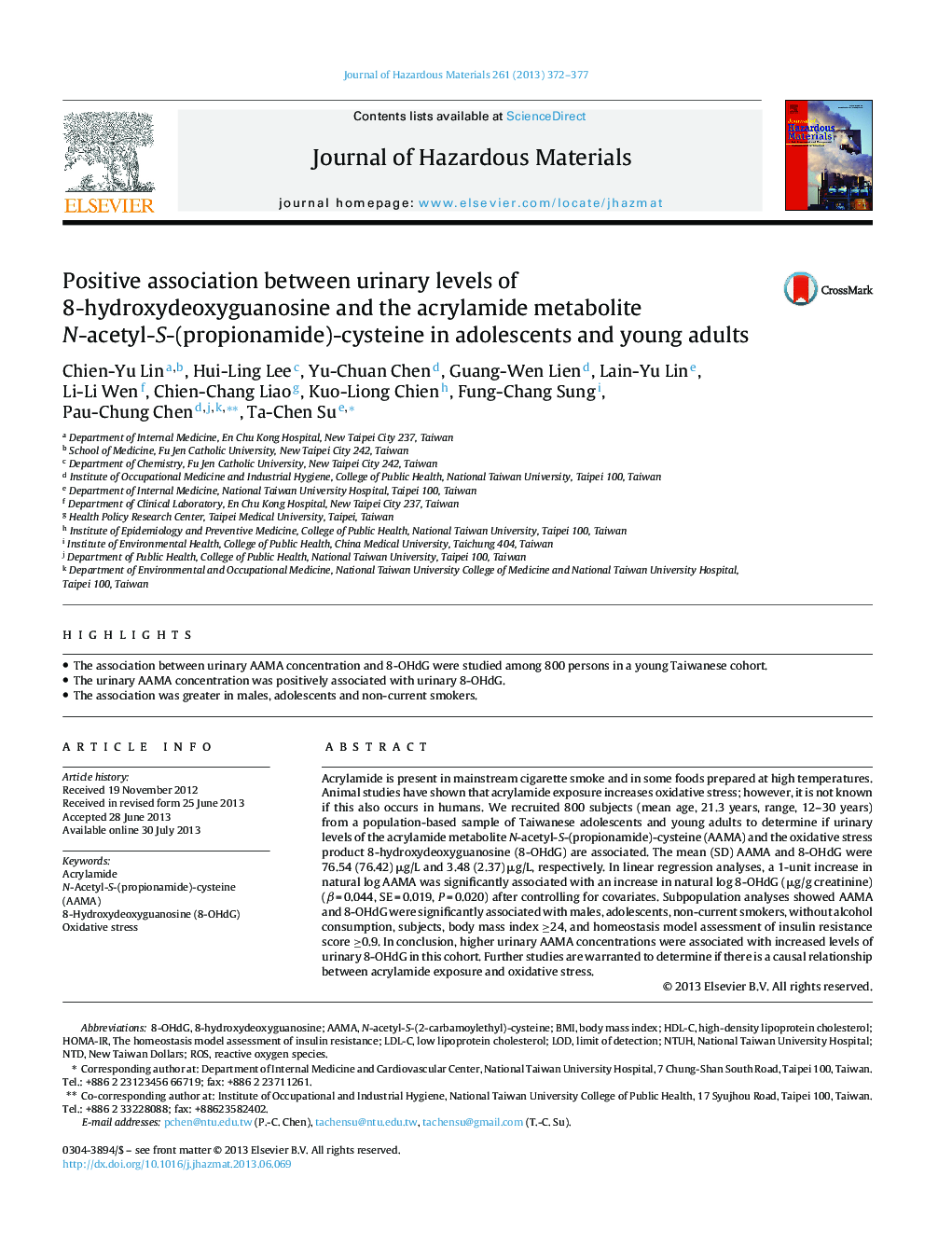| Article ID | Journal | Published Year | Pages | File Type |
|---|---|---|---|---|
| 6972005 | Journal of Hazardous Materials | 2013 | 6 Pages |
Abstract
Acrylamide is present in mainstream cigarette smoke and in some foods prepared at high temperatures. Animal studies have shown that acrylamide exposure increases oxidative stress; however, it is not known if this also occurs in humans. We recruited 800 subjects (mean age, 21.3 years, range, 12-30 years) from a population-based sample of Taiwanese adolescents and young adults to determine if urinary levels of the acrylamide metabolite N-acetyl-S-(propionamide)-cysteine (AAMA) and the oxidative stress product 8-hydroxydeoxyguanosine (8-OHdG) are associated. The mean (SD) AAMA and 8-OHdG were 76.54 (76.42) μg/L and 3.48 (2.37) μg/L, respectively. In linear regression analyses, a 1-unit increase in natural log AAMA was significantly associated with an increase in natural log 8-OHdG (μg/g creatinine) (β = 0.044, SE = 0.019, P = 0.020) after controlling for covariates. Subpopulation analyses showed AAMA and 8-OHdG were significantly associated with males, adolescents, non-current smokers, without alcohol consumption, subjects, body mass index â¥24, and homeostasis model assessment of insulin resistance score â¥0.9. In conclusion, higher urinary AAMA concentrations were associated with increased levels of urinary 8-OHdG in this cohort. Further studies are warranted to determine if there is a causal relationship between acrylamide exposure and oxidative stress.
Keywords
8-OHdGAAMAnew Taiwan dollarsNational Taiwan University HospitalNTDHDL-C8-Hydroxydeoxyguanosine (8-OHdG)LDL-CHOMA-IR8-hydroxydeoxyguanosineROSAcrylamidethe homeostasis model assessment of insulin resistanceOxidative stressLOD یا Limit of detectionbody mass indexBMIhigh-density lipoprotein cholesterollimit of detectionReactive oxygen species
Related Topics
Physical Sciences and Engineering
Chemical Engineering
Chemical Health and Safety
Authors
Chien-Yu Lin, Hui-Ling Lee, Yu-Chuan Chen, Guang-Wen Lien, Lain-Yu Lin, Li-Li Wen, Chien-Chang Liao, Kuo-Liong Chien, Fung-Chang Sung, Pau-Chung Chen, Ta-Chen Su,
